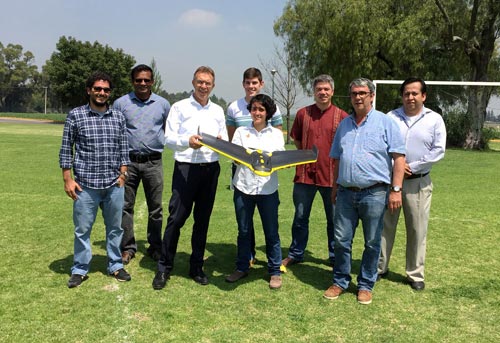Think of all the things you do with your cell phone on any given day. You can start your car, buy a coffee and even measure your heart rate. Cell phones are our alarm clocks and our cameras, our gyms and our banks. Cell phones are not just relevant for urban living but offer an opportunity to transform the lives of smallholders beyond compare. Even the most basic handset can empower farmers by providing them with instant information on weather, crop prices, and farming techniques.
For many farmers in the developing world, cell phones are the most accessible form of technology, but are only one of many technologies changing agriculture. Innovations such as the plow, irrigation and fertilizer have shaped the history of humankind. Today, technologies continue to play an essential role in agricultural production and impact the life of farmers everywhere.
Enter the era of hyper precision
Precision farming has been around for more than 30 years, but cheaper and more robust technologies are ushering in an era of hyper precision. With increasing climate uncertainties and price fluctuations, farmers can’t afford risk, and precision agriculture enables them to increase production and profits by linking biophysical determinants and variations in crop yield. A variety of farm equipment is being equipped with GPS and sensors that can measure water needs in the crop and nutrient levels in the soil, and dispense exactly the right amount of fertilizer and water as needed.
Precision agriculture may originate from large-scale, well-resourced farms, but its concept is highly transferable and it is scale independent. The pocket-sized active-crop canopy sensors, is already a game changing technology with the potential to bring precision agriculture within the reach of smallholders. Using such sensors to read crop health provides farmers with basic information that can be used for recommended nitrogen application. This has a dual purpose, both for smallholder farmers in areas where soils typically lack nitrogen, and those that over-fertilize while simultaneously reducing profitability and causing environmental pollution.
In Bangladesh, CIMMYT researchers are developing an irrigation scheduling app that predicts a week ahead of time whether a particular field requires irrigation. Based on satellite-derived estimates of crop water use, a soil water model and weather forecasts, the underlying algorithm for the app is also being tested in the north of Mexico.
The eyes in the sky
The human eye is a remote sensor, but on a farm there are many things that cannot be seen with the unaided eye, including surface temperatures and crop changes caused by extreme weather. At CIMMYT, remote sensing devices are allowing researchers to obtain information about a large area without physical contact that would otherwise be difficult to monitor. Indeed, last month I joined researchers at CIMMYT Headquarters in El Batan, Mexico, to learn more about the use of an Unmanned Aerial Vehicle (UAV) with built-in GPS and thermal and multispectral sensors that captures aerial photography to an image resolution of 3 cm. This device is being used to capture the canopy temperature and nitrogen status of crops.
Remote sensing alone is not going to teach a farmer how to properly sow a field, take the best care of his crops or optimize returns. Remote sensing explores spatial and temporal dimensions to provide a diagnosis but the next crucial step is to turn this into recommendations on nutrient management, irrigation and crop protection. The next question is how to bring these recommendations to small farms. In a low-tech setting, this depends on knowledge transfer to provide recommendations to farmers.

 Capacity development
Capacity development 
